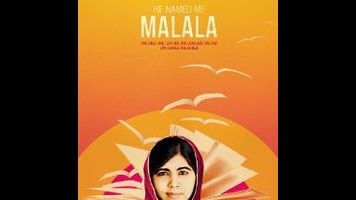Education activist and all-around role model Malala Yousafzai is eminently likable, so it’s something of a perverse achievement that He Named Me Malala, the latest feature-length campaign video from Davis Guggenheim (Waiting For Superman, An Inconvenient Truth), manages to tell her story in a way that’s bound to leave critically-minded viewers with a sour aftertaste. A puff piece for someone who doesn’t need one, Malala wraps Yousafzai’s life in media-circuit testimonials and fairy-tale-like animated sequences that stop just short of drawing an aureola of fire around her.
The thing is that Yousafzai—who’s still all of 18—has had a dramatic life. A camera-ready critic of the Taliban while still in her early teens, she barely survived an assassination attempt to become a high-profile campaigner for education rights and the youngest-ever winner of the Nobel Peace Prize. And she’s about as interesting a camera presence as a documentarian could hope for, intelligent and serious about global issues, but still a geeky, sometimes awkward teen who practices magic tricks, has crushes on cricket and tennis players, and struggles with her homework. Slick contemporary-issue docs like Malala usually have a little off-the-cuff observational filling, and the handheld glimpses of home and school life that make it in here are easily the best bits of the film, whether it’s the young activist arm-wrestling with her brother, or showing her autographed copy of her own memoir, I Am Malala.
These stray moments hold interest because they raise an honest-to-God question about what it’s like for someone who’s still figuring themselves out to be treated as an icon, and to travel the globe promoting education for women while learning to fit in with the girls at her own school—a question on which the movie has to rely on Yousafzai’s understandably shy non-answers. There are other questions, too, like how Yousafzai’s stance as a feminist public figure connects to her effectively unexplored relationship to her very conservative mother, Tor, whose difficulty adjusting since the family relocated from Pakistan to England is mentioned in passing.
As outspoken as Yousafzai is as a public figure, she’s reluctant to answer personal questions—a fact that the movie more or less treats as another sign of her saintliness. Guggenheim is more than happy to let every question slide, along with whatever conflicts and contradictions there might be to Yousafzai as a person. He’s interested in her only as an icon, and Malala functions less as a movie than as an audiovisual package—just another method of delivery for Yousafzai’s biography and cause, innocuous, information-packed, and utterly inessential. Given what appears to be unlimited access, Guggenheim and his crew follow their subject to public appearances around the world, whether it’s a charity red carpet or to an all-girls school in Kenya. The result, however, isn’t a peek behind the curtain; it is the curtain.









![HBO teases new Euphoria, Larry David, and much more in 2026 sizzle reel [Updated]](https://img.pastemagazine.com/wp-content/avuploads/2025/12/12100344/MixCollage-12-Dec-2025-09-56-AM-9137.jpg)































